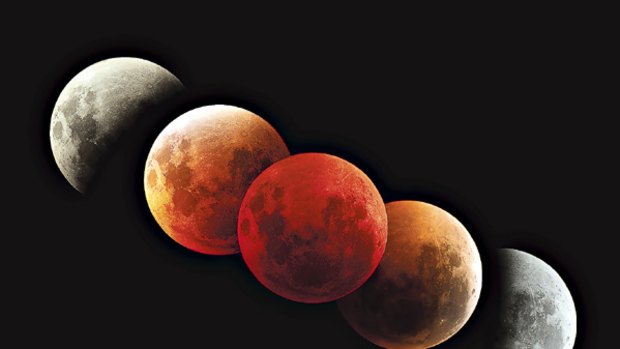
A lunar eclipse.Credit: Phil Hart
It's 400 years since Galileo Galilei first gazed at the stars through an astronomical telescope. To celebrate this milestone and other innovations the science of astronomy has produced, this year is the International Year of Astronomy (IYA) with the theme, The Universe, Yours to Discover.
This world-wide, year-long anniversary will be celebrated in Melbourne through a range of events and exhibitions. Some you may expect, others will take you out of this world.
Museum Victoria's Scienceworks
Ask Dr Tanya Hill, resident astronomer at Scienceworks Planetarium about IYA and with a laugh, she notes "every year is a celebration of astronomy here". With a full-dome planetarium to play with, creative and award-winning programs are produced on a regular basis here.
Following on from the The Problem With Pluto?, the new planetarium show on this year's schedule will turn the telescopes on our home and explore the history of Earth's atmosphere. Our Living Climate will compare Earth's climate with that of its neighbours in the solar system and look at the satellite technology being called upon to measure the carbon index.
The planetarium's dome will be turned over to real time viewing with the evening presentations Discover The Night Sky. Appearing every Thursday evening this month, and again in August, the series of four presentations will explore the art of backyard astronomy taking guests on a journey from Spotswood to the outer galaxies and to investigate the future of spaceflight.
Hill notes that the Q&A sections of these evenings always produce an exciting exchange of ideas, from debates about science and religion, the prospect of aliens and the anticipated discoveries on the return to the moon.
If visitors are in need of inspiration, the astronomy bug is guaranteed to bite upon viewing the astrophotography exhibition, Winning Sky Photos: The David Malin Awards. Featuring startling images of lunar eclipses, star trails and panoramas of far-flung galaxies, the show includes the winners and highlight entries from the amateur and semi-professional categories in this annual competition. Conducted by the Central West Astronomical Society as part of the Astrofest held in Parkes, NSW, the exhibition will be on show until April at Scienceworks.
Scienceworks is participating in the global IYA event, 100 Hours of Astronomy, where the surface of our sun will be the focal point. Across six continents, communities will take to their telescopes while observatories will share their viewings via webcasts. Scienceworks will use a special solar telescope on Sunday, April 5, allowing visitors to look at the surface of the sun.
Discover The Night Sky, Thursday through March and August, 7pm, $25 a person, phone 9392 4819; Winning Sky Photos: The David Malin Awards until April 2. View the surface of the sun with a solar telescope and participate in an astronomy Q&A on April 5 as part of the global event 100 Hours of Astronomy; planetarium show The Living Climate opens in June.
National Gallery of Victoria
The connection between art and astronomy is not immediately apparent - until you talk to the curators of the prints and drawings, indigenous and photography galleries at NGV.
Describing themselves as "self-confessed science geeks", the IYA is a brilliant excuse for these art experts to delve into the permanent collection of the NGV and produce two thought-provoking exhibitions celebrating the artistic depiction of space.
Light Years: Photography And Space, brings together images captured by NASA during the 1960s and '70s with artistic imaginings of space created by Earth-bound photographers.
The astronauts and unmanned probes initially captured space images for scientific purposes, however NASA saw the value of these photos as a PR tool to excite and engage the public. Among the photos displayed will be iconic images plus many that have been rarely viewed by the public.
While the NASA images evoked a different perception of Earth and our place in the universe, the artistic community embraced the photography medium to create their own imaginings of space. The exhibition will include abstract photos that create wondrous visions of outer space nebulae, the moon's surface, and solar eruptions. The NGV exhibition Shared Sky mirrors the collaborative nature of the science of astronomy, where observers work alongside theorists and scientists in Japan to assist researchers in the US.
The exhibition explores the mythology of the southern hemisphere's night sky. The interpretation of traditional Greek mythology is replaced by creation stories of indigenous communities.
The exhibition includes colonial era artworks of star trails in our southern sky, including lithograph created observations from the Great Melbourne Telescope, and night sky observations during the Burke and Wills expedition.
from May 8-September 27, National Gallery, St Kilda Road, free; , The Ian Potter Centre, Federation Square, until August 2, free.
Sign up for the Traveller Deals newsletter
Get exclusive travel deals delivered straight to your inbox. Sign up now.